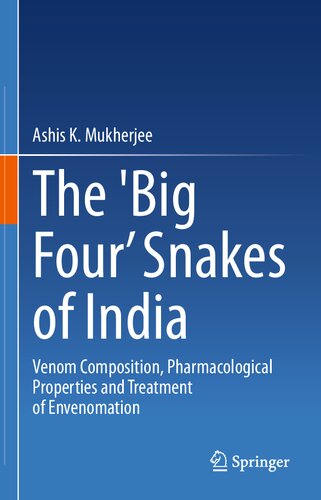

Most ebook files are in PDF format, so you can easily read them using various software such as Foxit Reader or directly on the Google Chrome browser.
Some ebook files are released by publishers in other formats such as .awz, .mobi, .epub, .fb2, etc. You may need to install specific software to read these formats on mobile/PC, such as Calibre.
Please read the tutorial at this link: https://ebookbell.com/faq
We offer FREE conversion to the popular formats you request; however, this may take some time. Therefore, right after payment, please email us, and we will try to provide the service as quickly as possible.
For some exceptional file formats or broken links (if any), please refrain from opening any disputes. Instead, email us first, and we will try to assist within a maximum of 6 hours.
EbookBell Team

4.0
96 reviewsThis book provides detailed and updated knowledge about medically important ‘Big Four’ venomous snakes of India (Indian spectacled cobra, Indian common krait, Indian Russell’s viper, and Indian saw-scaled viper). This book essentially covers the snakebite problem in the world with particular reference to Asia and India. It discusses the evolution and systematics of venomous snakes, emphasizing ‘Big Four’ venomous snakes of India; the evolution and composition of venoms determined by traditional biochemical and modern proteomic analyses. It also describes the pharmacological properties of enzymatic and non-enzymatic toxins of ‘Big Four’ venomous snakes of India. Different chapters discuss exciting topics such as species-specific and geographical differences in venom composition and its impact on pathophysiology and clinical manifestations of snakebite envenomation in India, biomedical application of Indian snake venom toxins; production and quality assessment of commercial antivenom, prevention, and treatment of snakebite in India, adverse effects of antivenom including strategies to combat antivenom reactions inpatient.
This book caters to toxinologists, pharmacologists, zoologists, antivenom manufacturers, biochemists, clinicians, evolutionary biologists, herpetologists, and informed non-specialists interested to know about the Indian snake venoms.